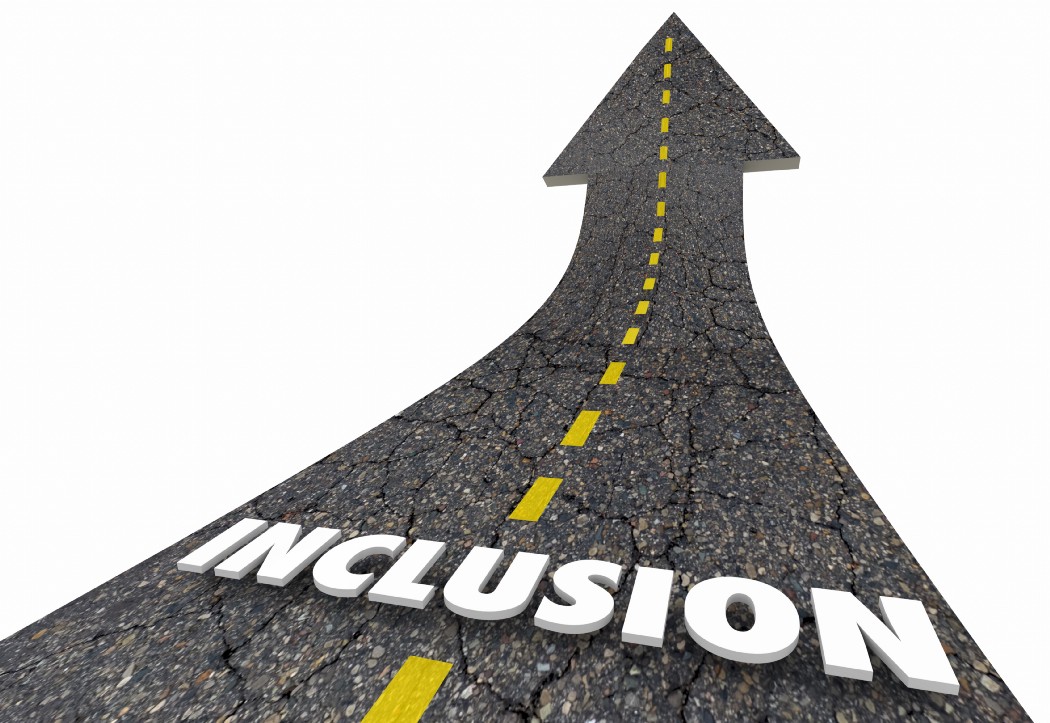News and Insights
A Healthy Case for Diversity and Inclusion
August 12, 2019
Imagine it was about you – How would you feel?
Bestselling author and cultural-change catalyst Verna Myers heads Inclusion Strategy at entertainment giant Netflix. She has an important take on diversity: “Diversity is being invited to the party. Inclusion is being asked to dance.”
Myers has it right. Diversity is an essential community-building process. Inclusion is its realization — where as the adage suggests — “the rubber meets the road.” Diversity and inclusion feel like the right things to do — something that we must work toward to build a just society that addresses the needs of all its members. Yet “work toward” is inspirational and offers no set objectives or road-map. “Work toward” must require measurable results, timelines and accountability. We must embrace this challenge and overcome its complications for the common good on multiple levels — creative, economic, health and justice.

Helen Shelton champions the Diversity and Inclusion program: Actions Speak Louder — Partners for Diversity. In her work at Finn Partners, Shelton promotes client products and services and advances important causes — from adult education and housing, arts and culture and voter registration, to disparate unemployment and health awareness initiatives. Her words on diversity and inclusion are an inspiration to our colleagues throughout the communications industry.
“We are at a defining moment in the industry as more and more companies are holding agencies accountable when it comes to diversity and inclusion — and demanding that we measure up. Diverse voices around the table inspire fresh ideas, new opportunities, and untapped connections that literally make the work and the brands we represent shine with tangible results and impact.”
Tangible results and impact. Reputation and good corporate citizenship often are catalysts for driving companies’ efforts around diversity and inclusion. But bottom-line results are an added reason to make diversity and inclusion an attractive business goal. Leaders at all levels recognize that diversity and inclusion fuel competitive advantage. Companies have been able to chart the positive economic impact diversity contributes to their growth and business outcomes.
In the 2018 Delivering Through Diversity report, McKinsey Consulting found that: “Companies in the top quartile for gender diversity on their executive teams were 15% more likely to experience above-average profitability…” In that same report, citing ethnic/cultural diversity, the consulting firm found there was a 33% likelihood of out-performance on EBIT (i.e., earnings before interest and taxes) profit margin. So, while diversity is the right thing to do, it’s also the smart thing for businesses to embrace.
In the health sector, disparities often correlate to a lack of inclusion. Though the tide is shifting, medicine at higher levels remains mostly a male-dominated profession. Expert clinical government panels still comprise mostly all-male participants, despite the obvious facts that women are always cited as the household health gatekeeper, comprise half of the nation’s population and are now a statistical majority in applications and acceptance to medical schools.
The Lancet, one of the more revered peer-review publications, has taken a step that will no doubt filter down into the medical innovation community. They have announced a No All-Male Panel Policy. Their editors will no longer participate on panels, public conferences or events where there are no women on the panel. For events that they organize or plan, their goal is to ensure that half of the panelists or speakers are female. If a journal with the standing of The Lancet has determined that diversity and inclusion are good for its own health, then shouldn’t those in the health sector consider including a wider range of minds and talents to their expert forums and to a greater variety of leadership roles?
Beyond gender, the benefits of including a wider range of ethnicities include greater productivity and variety of ideas. In their paper titled “Collaboration: Strength Through Diversity,” published in the global science magazine Nature, researchers Richard B. Freeman and Wei Huang found connections among a team’s ethnic mix, collaborative spirit and highly cited papers. Their research concludes that ethnic diversity improves productivity by widening ideas, sourcing references that contain a wider range of scientific terms and equipment, procedures, or data, and reference a wider range of previous work than papers from homogeneous groups.
“Diversity in representation is just part of the equation,” notes Tom Mihaljevic, MD, president and CEO of the Cleveland Clinic:
“That only addresses demographics. However, when there is an inclusion imperative, caregivers have a sense of purpose and belonging. Add to that cultural competence — which is responding appropriately to people of varying backgrounds, in a way that recognizes differences and allows individuals to feel respected and valued — and you have a well-formed ecosystem designed to serve all equally and with respect.”
Sensitivity toward others is not a new concept. It’s as old as the world’s best-selling book, the Bible. “To love our neighbors as ourselves,” is a timeless goal that can translate into happier workplace communities and give birth to bold, creative concepts that improve the human condition — uniting people across race, religion, gender identification, physical abilities and geographies. When we look at the world’s challenges, let us use one of humanity’s greatest attributes — imagination. Let’s not just work toward diversity and inclusion. Let’s imagine the possibilities we can achieve and press forward, dedicating ourselves to their realization.
